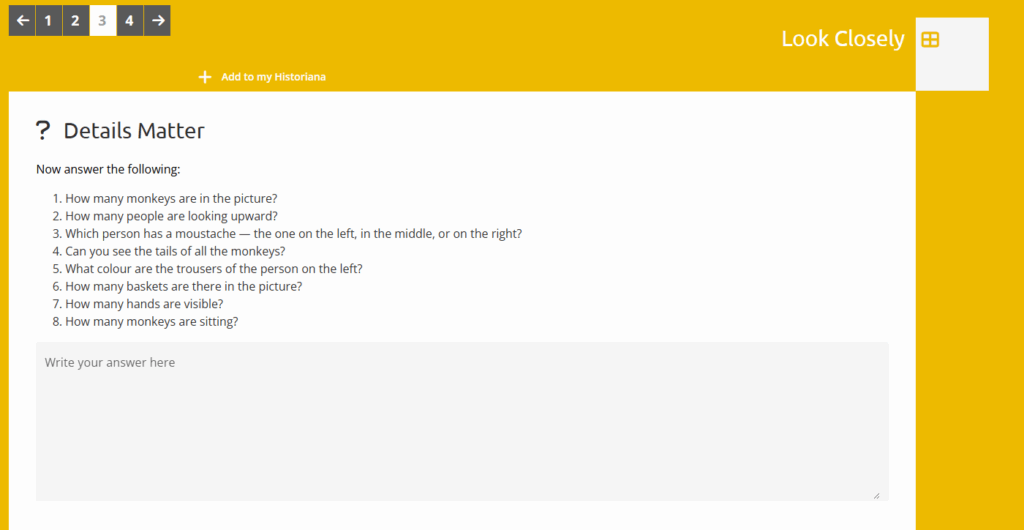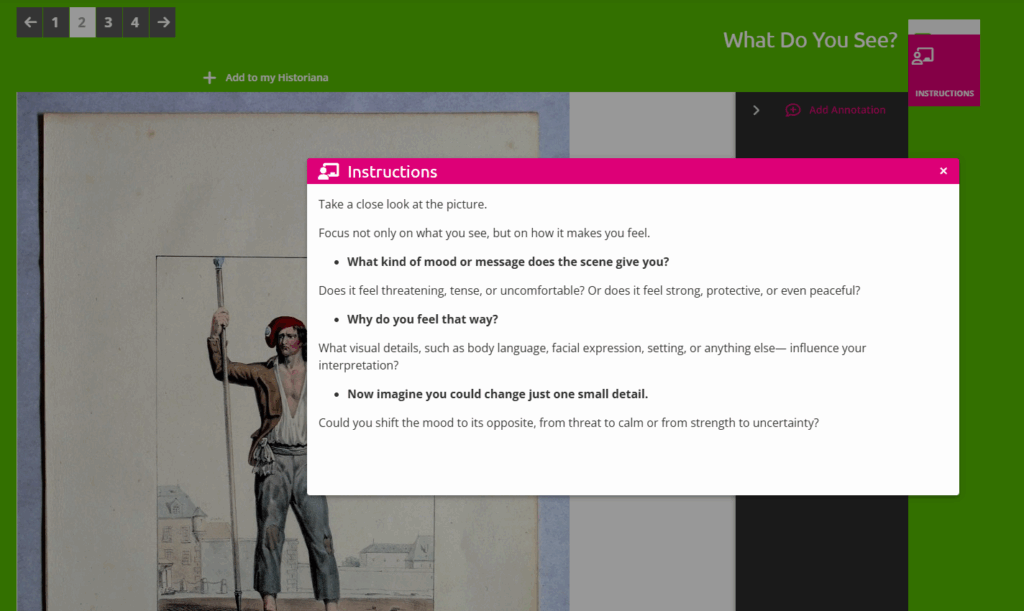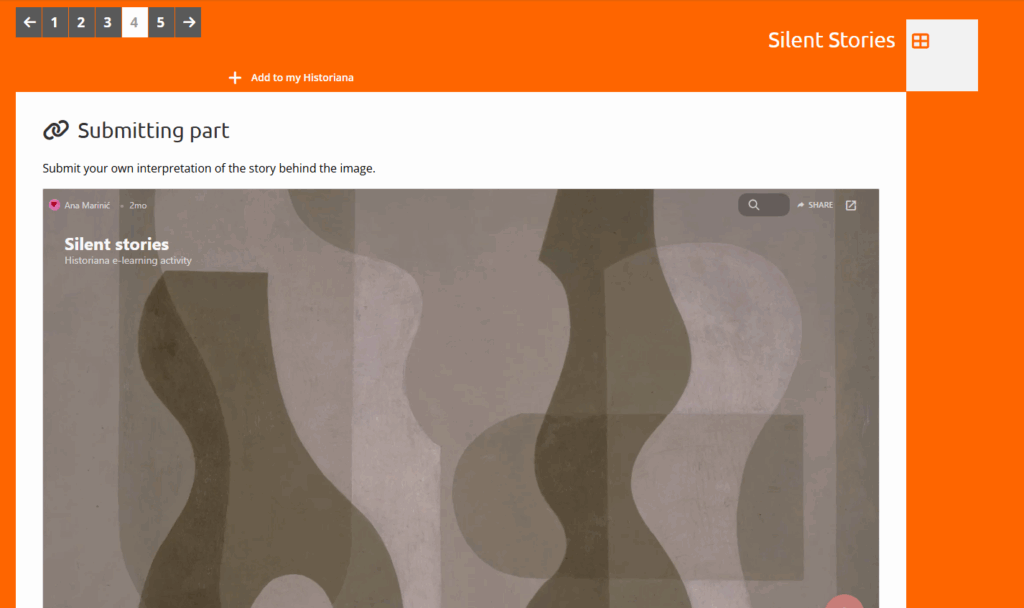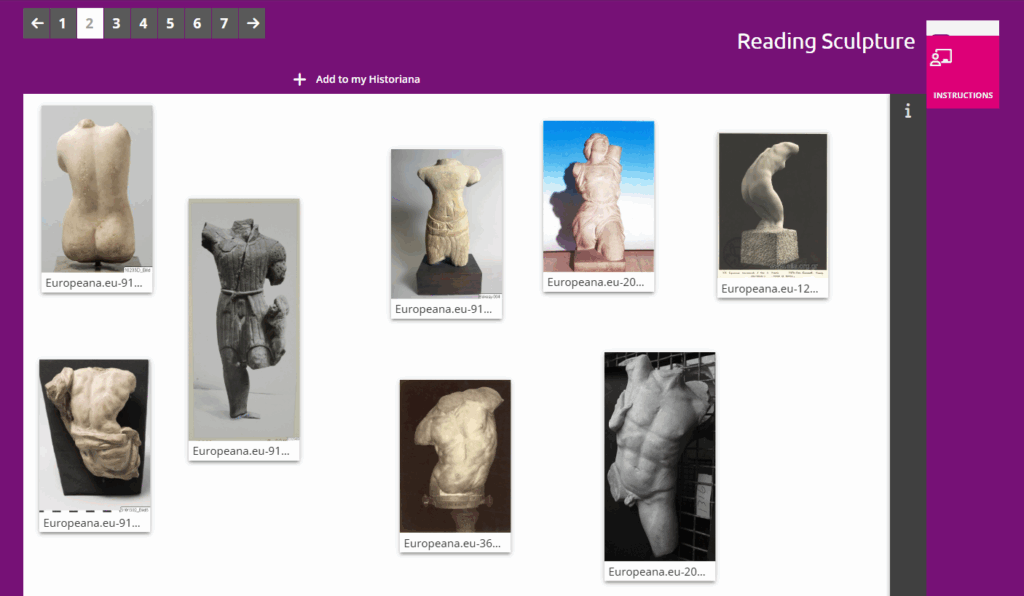In May 2025, EuroClio and Europeana welcomed six cultural heritage educators to The Hague for a co-creation session as part of ‘Creating Lessons with Cultural Heritage’. The project seeks to dive into the untapped wealth of cultural heritage available through museums, archives and other cultural institutions to create ready-to-use materials for the classroom.
During their stay, the educators co-created eLearning activities using the Historiana platform. Below, Ana Marinić shares her experience of working with digital cultural heritage and introduces her eLearning teaching activity.
Introduction
Anyone involved in teaching knows how extensive the preparation can be when aiming to achieve specific educational outcomes. The goal of teaching is not just to transmit subject knowledge, but to empower young people to think critically, invest in their own growth, and act consciously in their lives and in the world.
In the everyday rhythm of teaching, it’s easy to forget how much impact small, well-designed pedagogical activities can have.
In this blog post, I focus on such simple but powerful strategies, applicable across different subjects and stages of the teaching process.
Why Does It Matter?
In modern education, it is essential to connect subject content with the development of a broader set of competencies, especially those that foster critical thinking, expression, collaboration, and responsible action.
A short introduction, a simple energizer, or a moment of reflection can significantly boost student motivation and understanding.
It is through such activities that students become active participants in the learning process by observing, making connections, expressing themselves, and developing civic literacy.
One particularly rich area for developing such competencies is cultural heritage. It is an essential part of our shared legacy that shapes identity and acts as a bridge between communities and generations. By engaging with cultural heritage, students gain a deeper understanding of who they are, where they come from, and how they are connected to others.
When cultural heritage is available in digital form, it becomes even more accessible and versatile. Students can explore photographs, documents, audio and video materials, as well as personal testimonies and stories – many of which would otherwise be difficult to access. This opens up diverse opportunities for meaningful, interdisciplinary learning. Heritage can become both the subject of inquiry and a tool for achieving subject-specific or cross-curricular learning outcomes.
What Does This Look Like in Practice?
The following examples are part of a simple eLearning activity I developed on Historiana, aimed at encouraging observation, reflection, and the development of civic competence through engagement with visual sources.
All activities are based on easily adaptable formats that can be used across different subjects and educational levels.
Short descriptions and links to each activity can be found below.
Look closely
A still image or short video clip is shown, thematically connected to the lesson content.
Students view it only once, possibly within a set time limit. This constraint enhances focus and encourages careful observation. After viewing, students answer a series of questions focused on the visual details they noticed.
This activity develops attention and concentration. Through observation and reflection, students strengthen their skills of noticing and interpreting information which are essential for critical thinking.
They learn that understanding requires pausing, looking closely, and thinking deeply. These are key skills for active and empathetic participation in society.

Link to activity: http://hi.st/Bqv
What Do You See?
An image related to the lesson topic is shown, one that portrays an emotionally charged scene, interpersonal interaction, or social situation.
Students observe the scene and reflect not only on what they see, but also on how it makes them feel, what message the image conveys and which visual elements contribute to that interpretation.
In the second step, they imagine one small change in the image and consider how it would alter the impression or meaning of the scene.
This activity encourages interpretation, empathy, and reflection on meaning. Students learn to read nonverbal cues and understand how images communicate ideas. In doing so, they strengthen visual literacy and develop civic competencies relevant to media, relationships, and social contexts.

Link to activity: http://hi.st/Bqw
Silent Stories
An image related to the lesson content is shown, depicting a moment of human interaction.
Students observe the scene and reflect on body language, emotions, relationships, and the overall atmosphere. They then create their own interpretation, either by writing a short dialogue between the characters or an inner monologue from the perspective of one of them.
This activity encourages empathy, reflection, and expression. Students develop the ability to interpret facial expressions and body language, and connect what they see to emotions and interpersonal dynamics. In doing so, they strengthen essential skills for civic competence – emotional literacy, self-expression, and perspective-taking.

Link to activity: http://hi.st/Bqx
Reading Sculptures
Students are shown images of torso sculptures that invite them to imagine the missing parts of the body and complete the figure using their own physical pose.
In the first part of the activity, students observe the sculptures and reflect on their expression, style, and material. They then choose one and take a body posture that imaginatively continues the form of the sculpture. In the final step, they compare their own interpretations with those of their classmates and consider the variety of possible meanings.
This activity connects art with personal expression and physical awareness.
Students develop visual and emotional literacy, learn to value diverse interpretations, and recognize that multiple perspectives can be equally valid and meaningful.

Link to activity: http://hi.st/Bqy
Conclusion
We don’t always need elaborate lesson plans to make a strong impact. Sometimes, all it takes is the right question, a carefully chosen image, or giving students the space to express their own perspective.
I encourage you to try these activities in your subject – adapt, expand, or shorten them as needed. Any short method that fosters critical thinking, empathy, and civic literacy is worth far more than it might seem at first glance.